Exploring West Village Houses: Design and Lifestyle
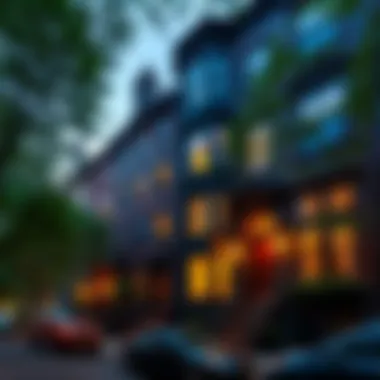
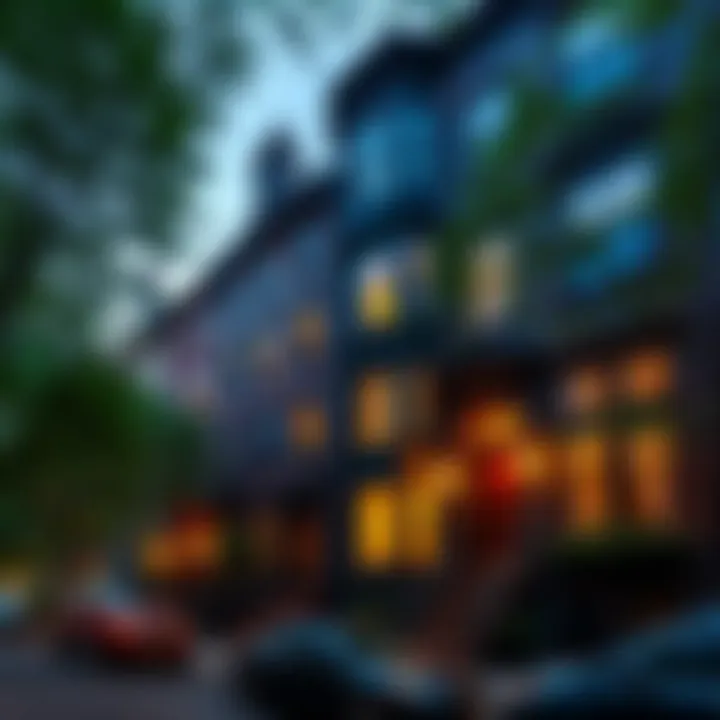
Intro
The West Village is a tapestry stitched together with rich history, aesthetic variety, and a unique lifestyle that’s hard to find elsewhere in New York City. This quaint neighborhood, nestled manly between the Hudson River and the bustling streets of Manhattan, invites not only its residents but also curious visitors to explore the character of its houses. From brownstones that seem to whisper the tales of yesteryears to contemporary builds that harmonize with their surroundings, the homes of the West Village reflect an intricate blend of artistic expression and urban functionality.
The significance of these houses transcends mere architecture; they encapsulate a lifestyle heavily influenced by the pulse of city life. As we venture through the nuances of design inspirations, maintenance tips, and the impact of cultural trends, this article will peel back the layers of what makes West Village homes so compelling.
By diving into the core elements of design and lifestyle in this iconic neighborhood, we can appreciate how individual aesthetics emerge while also adhering to the broader conditions of urban living. This blend is not just a passive observation; it’s a reflection of the community, a narrative steeped in the rhythm of everyday life. Whether you are an aspiring homeowner, a design enthusiast, or simply planning a digital window shop through the streets of the West Village, the insights shared here will arm you with the knowledge and appreciation for the beauty woven into its fabric.
Join us as we dissect these elements and strive to better understand the essence of West Village houses, shaping both aesthetic trends and urban living.
"A home is more than just four walls; it’s a canvas where life’s moments unfold."
As we explore further, it becomes evident that the allure of these houses provides endless inspiration.
Next, we dive into the design inspirations that characterize the unique charm of West Village houses.
Historical Context of West Village Architecture
Understanding the architectural history of the West Village is akin to peeling back the layers of an onion—each layer reveals a unique aspect of its rich past. The buildings here do not just serve as structures; they embody narratives of change, creativity, and cultural evolution that resonate deeply with anyone who wanders these streets. Knowing the historical context is essential to appreciate the area’s charm and how it has developed into one of New York City’s most desirable neighborhoods.
Early Developments in Neighborhood Design
The West Village's architectural story begins long ago, tracing its origins to the early 19th century when the area was more rural than urban. Originally, this part of Manhattan was primarily farmland with a few scattered homes. However, as the city began expanding, developers saw potential in the rolling hills and quaint spaces.
One can imagine the early cobblestone roads where horse-drawn carriages would come to a standstill in front of newly constructed brownstones. The introduction of these two-to-four-story row houses—many built with brick and elaborate details—set the tone for the neighborhood's aesthetic.
What's striking about the early designs is the balance between usability and style. Homes were crafted not just to be lived in, but to reflect a burgeoning sense of personality and community among the residents. The organic integration of homes and streets creates a kind of maze that encourages exploration, making it a tapestry of human experience.
Influences of the Arts and Bohemian Culture
As the 20th century rolled around, the West Village found itself in the midst of an artistic renaissance. The area attracted a slew of writers, painters, and musicians, many of whom infused their lifestyles into the very buildings and spaces around them. You’d find folks like Jackson Pollock and Allen Ginsberg strolling these streets, their creativity echoing through the architectural landscape.
Art wasn’t just a hobby; it became a way of life. This vibrant cultural tapestry invited artists to transform their living spaces into workshops and studios. Homes became blur between art and daily life, evident in the whimsical designs, murals adorning walls, and eclectic furnishings.
Residents started to embrace a lifestyle that celebrated individuality. This Bohemian culture actively influenced the designs of buildings and helped establish little pockets of inspiration. The impact is still palpable today, as many modern decorators draw from these historic influences to create warm, inviting spaces.
Preservation Efforts and Landmark Designations
With the character of the West Village firmly established, the looming threat of modernization put the area's architectural integrity at risk. In particular, the mid-20th century saw rapid urban development, with many historic buildings facing demolition in the name of progress. However, against this backdrop of change emerged a robust movement aimed at preservation.
The 1960s saw the designation of several buildings as landmarks—a pivotal moment in safeguarding the unique fabric of the neighborhood. Organizations such as the Landmarks Preservation Commission worked tirelessly to protect not only exquisite details but the very essence of New York City’s history. This commitment to preservation has ensured that both residents and visitors can appreciate the architectural beauty that has stood for more than a century.
Indeed, walking through the West Village today, one senses the weight of history in its bricks and mortar. The preservation of these historic structures has proven valuable, not only in maintaining aesthetic appeal but in fostering a shared community spirit among residents.
Architectural Styles of West Village Houses
The architectural styles prevalent in the West Village are not merely ornamental features; they represent a tapestry of cultural history, social evolution, and the individual spirit of New York City. They embody the soul of the neighborhood, showcasing how design can affect one’s lifestyle. From the stately brownstones that speak of another era, to the flicker of modern touches blending with classic aesthetics, the diversity in architectural styles offers insights into an urban environment where history and innovation intermingle seamlessly.
Understanding these styles is vital for homeowners, design enthusiasts, and even casual visitors looking to appreciate the unique character of this iconic locale. Each style brings forth specific elements, benefits, and considerations that can significantly impact a home’s ambience and functionality.
Brownstones: Timeless Elegance
Brownstones are arguably the most recognized symbol of New York City architecture, particularly in neighborhoods like the West Village. Built primarily in the late 19th and early 20th centuries, these homes are often characterized by their rich, sandstone facades and ornate details. The choice of brownstone as a building material was not just aesthetic; it also provided a durable and easily workable stone, making it ideal for creating exquisite designs.
Inside, brownstones typically feature high ceilings, spacious living areas, and intricate moldings. The natural flow of the space encourages social interaction, making them perfect for families and entertaining guests. Homeowners often appreciate the elegant staircases and the unique fireplaces, which serve as focal points in the living spaces.
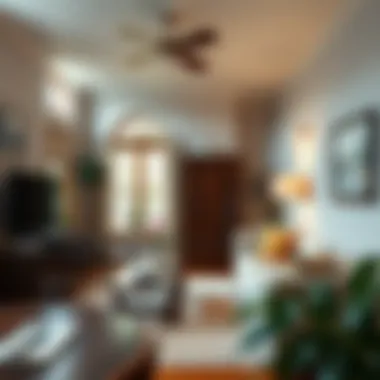
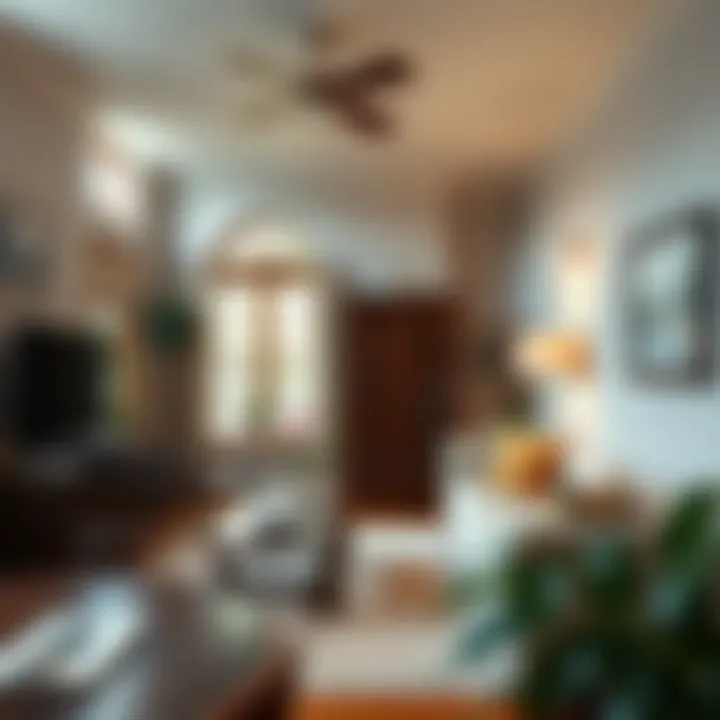
One might consider that while brownstones hold historical significance, they also come with upkeep challenges. Maintenance of older structures requires diligence and often careful investment. However, for those who cherish craftsmanship and the historic aesthetic, the rewards of living in such a classic home outweigh any inconveniences.
Federal and Greek Revival Styles
The Federal and Greek Revival styles that pepper the West Village present a contrasting yet complementary feel to the more ubiquitous brownstones. The Federal style, prominent from the late 18th to early 19th centuries, showcases symmetry, simple lines, and elegant proportions. Homes built in this tradition often feature decorative pilasters and fanlight windows, giving them a refined yet approachable look.
Greek Revival, flourishing in the 1830s and 1840s, emphasizes grandeur and is marked by imposing columns and pediments. The use of heavy cornices and bold motifs invokes a sense of strength and stability, truly reflecting the ideals of democracy and civic duty from which this style arose.
The inclusion of these styles in the West Village not only adds depth to its architectural vocabulary but also speaks to the variety of influences that have shaped the area. Homeowners drawn to these aesthetics should keep in mind the careful preservation of details as key in maintaining their charm, ensuring authenticity prevails in any modern adaptation.
Modern Influences in Traditional Settings
As we survey the architectural landscape of the West Village, it becomes increasingly apparent that modern design is beginning to coalesce with traditional styles, creating a diverse array of houses that mirror contemporary needs and tastes. Integrating modern influences into existing frameworks often breathes new life into historic homes, ensuring they remain relevant in today’s fast-paced society.
Think of sleek glass fixtures juxtaposed against the rustic texture of a brick facade, or minimalist interiors that champion functionality while appreciating the ornate past. This melding encourages homeowners to push boundaries while respecting architectural heritage.
Incorporating smart home technologies and sustainable practices into renovations, for example, doesn’t just adapt these homes for modern living; it also addresses vital issues like energy efficiency. However, modernizing older homes poses its own challenges. The crux lies in enhancing without overshadowing—striking a balance between innovation and tradition that can cater to both aesthetic vision and practical living needs.
The architectural styles in West Village not only define its visual character but also encapsulate the spirit of a community enriched by history and modernity.
Interior Design Trends in West Village Homes
The aesthetic of West Village homes reveals much about the lives of those who inhabit them. The interior design trends not only make spaces more functional but also reflect individual style and broader cultural currents. West Village, with its rich history and unique architectural fabric, provides a canvas for design evolutions that cater to diverse lifestyles, preferences, and the ever-evolving urban living experience. This neighborhood stands as an active participant in the dialogue between comfort and style, tradition and modernity.
Open Spaces vs. Defined Areas
When walking through the West Village, you may notice how many homes prioritize open spaces, effectively breaking down barriers within the living area. There’s no doubt this trend aligns with a desire for connectivity and fluidity. With the hustle and bustle of city life, residents often seek environments that promote ease and openness. Proprietors are now opting for fewer walls, spilling natural light across vast areas. The aim? To create inviting atmospheres conducive to entertaining or simply unwinding after a long day.
However, defining areas still holds significant appeal. Homeowners often find practicality in establishing distinct zones for specific activities, especially in smaller spaces. For instance, a cozy nook may serve as a reading area, while a spacious dining spot encourages engaging conversations over meals. As with most things, there’s a balance to strike here. Combining both trends by utilizing furniture arrangements or strategic decor placements can help achieve a semblance of openness while still catering to functional needs.
Incorporating Vintage Elements
One cannot overlook the charm of vintage elements within West Village interiors. Many enthusiasts are after that elusive blend of the old and the new, and it’s these timeless pieces that bring character and warmth to modern designs. Vintage items are not merely relics; they are conversation starters, each telling a story of eras gone by. Think of a weathered dining table, perhaps inherited or found at a local flea market, paired with contemporary chairs. This vibrant juxtaposition not only celebrates history but also grounds the space with sincerity and touch.
Moreover, the sustainable mindset fueling a return to vintage aesthetics can’t be ignored. Homeowners are increasingly conscious of their carbon footprint. By incorporating secondhand pieces, they contribute to reduced waste while embracing unique styles that mass-produced items simply cannot replicate.
The Role of Art in Home Decor
In the West Village, art serves as more than just decoration; it is an integral part of the living experience. Artworks possess the power to transform a mundane space into something extraordinary. Homeowners recognize this potential, making intentional choices about what adorns their walls and surfaces.
From local galleries offering unique finds to talented artists residing in the area, the West Village is a hub of creativity. Many choose to display statements or collections that resonate with their personalities, challenging the idea of traditional decor. Think bold colors splashing against neutrals or thought-provoking sculptures gracing entryways. Art also serves practical functions; for instance, it can guide movement through open spaces or anchor defined areas, creating focal points that spark interest.
As a sentiment echoed across artistic communities,
“Art is not what you see, but what you make others see.” This perception resonates strongly in interior design, where art becomes a vehicle for self-expression and connection, bridging the gap between personal identity and public visual culture.
The interior design trends in West Village homes encapsulate the community's spirit. They invite introspection while promoting engagement, reflecting the dichotomy of urban living amid a canvas of warm vintage textures, airy spaces, and personal artistry. Each home in this neighborhood tells a unique story; a rich narrative shaped by the past yet firmly rooted in a modern context. As you navigate through these treasured streets, consider the spaces that engage you and the design choices that resonate, and reflect on what they reveal about those who call the West Village home.
Landscaping and Outdoor Spaces
Landscaping and outdoor spaces in the West Village encapsulate a vital slice of urban living. They not only enhance the aesthetic appeal of homes but also contribute significantly to the lifestyle choices of residents. Homes in this neighborhood often blend indoor comfort with outdoor elegance, making the outdoor areas as important as the interiors.
The benefits of thoughtfully designed outdoor spaces are countless. They provide a much-needed respite within the bustling city life, encouraging relaxation and leisure. Not to mention, gardens, terraces, and balconies can be transformed into personal escapes that help homeowners breathe easier amidst their busy lives. A well-designed landscape can also elevate property value, making it an essential investment for homeowners.
Moreover, integrating elements like greenery, native plants, and sustainable materials reflects a homeowner’s commitment to the environment. Outdoor spaces become extensions of living areas, where friends and family gather, fostering social interactions.
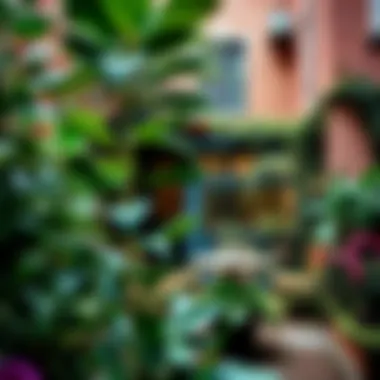
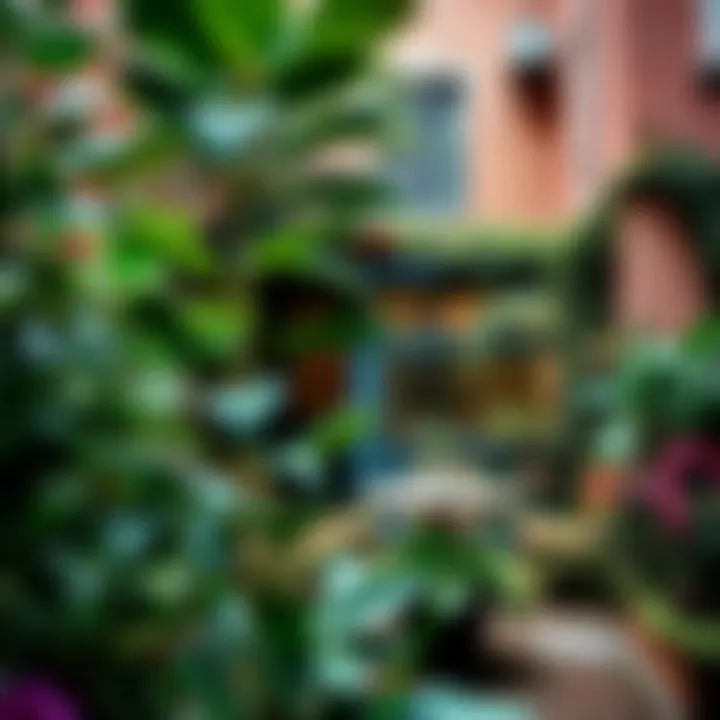
Balconies and Rooftop Gardens
Balconies and rooftop gardens are common sights in the West Village. They serve as tranquil retreats overlooking the lively streets below. These spaces are not just for aesthetics; they play a functional role in urban living as well. A balcony adorned with flowers can be quite a sight, turning heads as much as the interiors of a home.
Rooftop gardens, on the other hand, are often seen as luxurious assets. They are a canvas for creativity—an opportunity for homeowners to express their personality and lifestyle choices. Whether it’s a quiet nook with seating or a vibrant garden filled with herbs and perennials, rooftop gardens can attract local wildlife and promote biodiversity.
Many designs incorporate raised vegetable beds, which allows residents to grow their own produce, aligning with the sustainable practices that many in the West Village value. These spaces not only provide greenery but also enhance physical and mental well-being.
Patios as Extensions of Living Areas
Patios are another crucial component, blurring the lines between indoor and outdoor living. In the West Village, these areas often extend from homes, allowing natural light to flow into the living room while providing a seamless transition to outdoor enjoyment.
Homeowners can transform patios into personalized havens. With comfortable seating, fire pits, or even outdoor kitchens, these spaces become ideal for entertaining guests or enjoying peaceful solitude. Plantings can also enhance these patios, balancing hardscaping with soft landscaping.
Plus, patio aesthetics contribute to the overall harmony of the home’s design. Using materials that blend well with the house ensures that the outdoor space feels like a natural extension of the indoor environment.
Community Gardens and Green Initiatives
Community gardens are a testament to the West Village’s commitment to green initiatives. They often serve as gathering places, where residents come together to grow food and cultivate friendships.
These gardens promote cooperation and sustainability, as they are usually managed by local volunteers who aim to beautify the neighborhood while benefiting the environment. They provide not only fresh produce but also a learning opportunity for those interested in gardening and ecology.
Engaging in such initiatives fosters a sense of community and reinforces the bond among residents. A walk through any community garden here can reveal the flavors of the neighborhood, as residents often share cultural recipes and gardening tips.
The landscaping and outdoor spaces in the West Village are more than just home extensions; they are reflections of a community that values sustainability, creativity, and connection.
In summary, landscaping in the West Village represents the essence of urban living, where outdoor spaces enhance not only the homes they envelop but also the lifestyles of those who reside within them. 💚
For more information on gardening practices and community initiatives, you can visit Wikipedia on Community Gardens or check out resources from the American Community Gardening Association.
The Impact of Lifestyle on Home Design
In the West Village, where every corner tells a story, the design of a home does more than just sit pretty; it resonates with the lives within. This intersection of lifestyle and design is key to understanding the essence of living in this historic neighborhood. Homes are not simply structures; they are reflections of how individuals and communities navigate the complexities of urban life. Here, lifestyle strongly influences architectural decisions, thereby shaping the overall ambiance.
Work-Life Balance in Urban Settings
For many West Village residents, the challenge of balancing work and leisure is a daily reality. The design of a home can play a pivotal role in this equation. Living spaces are increasingly being tailored to accommodate both professional needs and personal well-being. Many residents opt for home offices tucked away from the bustle of everyday activities. This separation allows for a focused environment that enhances productivity without sacrificing comfort.
- Natural Light: One of the most sought-after features in home design is ample natural light. Large windows or skylights can facilitate a brighter atmosphere, promoting a positive work environment. It gives that boost of energy even on the gloomiest days.
- Versatile Spaces: In some homes, you might find a living area that doubles as a workspace. This flexibility not only maximizes limited square footage but also creates an organic flow where inspiration can strike at any time.
The psychological benefits are significant here. When spaces are designed with mindfulness of lifestyle—balancing a place for work and relaxation—the overall quality of life improves.
Social Spaces for Entertaining
The communal vibe of West Village cannot be understated; it is a hotspot for social interactions. Hence, homes are often sculpted to foster gatherings, celebrations, and connections. Designers focus on crafting social spaces that encourage sharing and experience.
- Open Floor Plans: These are a popular choice, inviting guests to mingle rather than be segregated in different rooms. A spacious kitchen flowing into a living room can facilitate easy communication between hosts and guests, enriching the experience.
- Inviting Outdoor Areas: Patios and balconies serve not just as aesthetics but as functional spaces for entertaining. These outdoor extensions enable residents to blend indoor comfort with outdoor charm, making every gathering feel unique and refreshing.
In creating these interactive spaces, homeowners can stimulate relationships—an essential aspect of urban living.
Mindfulness and Relaxation Areas
As the pace of the city never ceases, so does the importance of having spaces dedicated to relaxation and stillness. Designed thoughtfully, these areas can foster a sense of peace and well-being, vital for residents seeking balance amidst urban chaos.
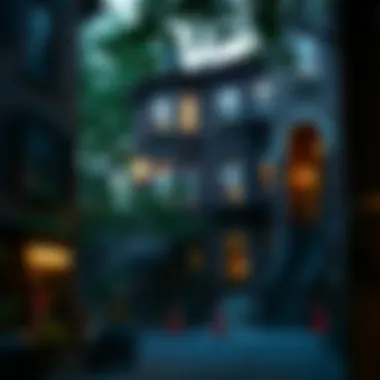
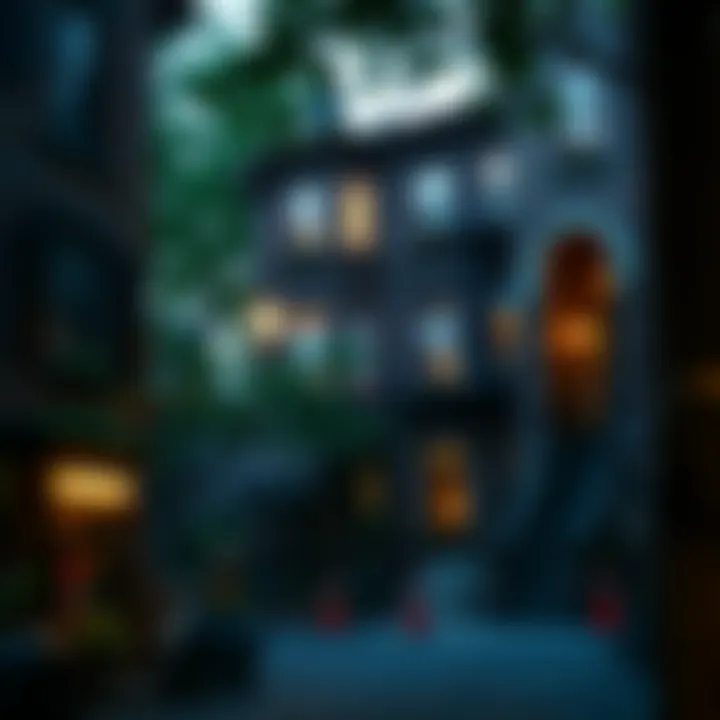
- Zen Gardens: Some homeowners incorporate small gardens with soothing elements like water features or carefully selected plants. These add a touch of nature, bridging the gap between urban life and the tranquility often sought.
- Meditation Rooms: Beyond the standard living spaces, creating a dedicated area for mindfulness practices has gained traction. Simple cushions, soft lighting, and calming visuals can transform an ordinary room into a sanctuary.
West Village’s vibe thrives on cultural richness, and mindfulness practices enable residents to recharge in the middle of it all, proving that home design has a direct impact on quality of life.
"Design is not just what it looks like and feels like. Design is how it works." – Steve Jobs
Ultimately, integrating lifestyle aspects into home design in the West Village articulates a deeper understanding of its residents. It’s about creating spaces that are not just beautiful, but also functional and reflective of one’s wants and needs. Through thoughtful design, homeowners carve out experiences that resonate on personal and communal levels, making every home a unique narrative in this vibrant neighborhood.
The Future of West Village Housing
The West Village stands at a crossroads, where history meets innovation. As we peer into the future of housing in this iconic neighborhood, several specific elements warrant attention. Urban development is oftentimes a balancing act, and in a locale rich with architectural history and cultural vibrancy, that balance is even more crucial. Homeowners and design enthusiasts alike are captivated by how sustainability, technology, and historical preservation shape the future of West Village homes.
Sustainable Practices in Construction
Sustainability is more than just a buzzword; it’s a critical consideration for contemporary housing in the West Village. Traditional building materials often come at a heavy environmental cost. However, innovative construction techniques are gaining traction, reducing the carbon footprint associated with new builds. Examples like using reclaimed wood for structural elements or integrating recycled materials into design can not only reduce waste but also maintain the village's characteristic charm.
- Benefits of Sustainable Practices:
- Reduced energy costs for homeowners
- Increased property value due to eco-friendly appeal
- Contribution to a healthy living environment
Many homes now utilize green roofs, which not only provide insulation but also promote biodiversity. Consider the quiet whispers of nature amidst urban chaos, as plants thrive on rooftops and balconies, transforming concrete jungles into small oases. These green practices rejuvenate spaces while aligning with the ethos of the community, marrying style with responsibility.
Emerging Technologies in Home Design
Technology is remaking how we view and design our living spaces. Smart home systems have ventured far beyond just automated lighting and temperature control. Now, integrated security measures, energy-efficient appliances, and intelligent home management systems are becoming standard fare in homes of the West Village. The adoption of these technologies isn’t merely a trend; it’s a necessity in urban settings where efficiency is vital.
- Common Technologies Include:
- Smart thermostats that learn your schedule
- Advanced home security systems with real-time monitoring
- Energy-efficient windows that reflect heat
Given the historical essence of the area, homeowners face the challenge of integrating these modern amenities without betraying the aesthetic integrity of their residences. The future sees a blend of sleek functionality and vintage character, a delightful dance of old and new that respects the past while providing the comforts of contemporary living.
Adaptive Reuse of Historical Structures
Adaptive reuse has emerged as a significant trend in the West Village, where old warehouses and factories transform into trendy lofts or apartment complexes. This approach not only preserves the intricate history embedded in the structures but also offers a practical solution to urban housing shortages. Revitalizing these spaces breathes new life, merging history with fresh purpose.
- Key Advantages of Adaptive Reuse:
- Preserves cultural and architectural heritage
- Minimizes the need for new construction, thus conserving resources
- Potentially lowers costs by refurbishing instead of building new
Historically significant buildings, once on the brink of dereliction, can experience a Renaissance, serving the community in novel ways. When a former industrial site is tailored into modern living quarters, it tells a story of resilience and adaptation, reflecting a commitment to the past as the community forges ahead. This melding of history and functionality positions West Village housing as not just a place to live, but a heritage-rich tapestry of lifestyle choices and architectural integrity.
The End: The Allure of West Village Homes
The conclusion of this exploration underscores the beauty and significance of West Village homes, where architectural elegance meets a vibrant lifestyle. These homes do not merely provide shelter; they are a reflection of personal tastes and a deep cultural heritage. They embody the prevailing trends of urban living while retaining a sense of history that captivates both residents and visitors alike.
Personal and Cultural Reflections
Reflecting on West Village’s character, one notices how diverse narratives intertwine in this neighborhood. Each house tells a different story, echoing the lives of those who have inhabited them over the years. Streets lined with brownstones and inviting courtyards become stages for the intricate tapestry of urban life.
Residents share a sense of pride in their homes, often engaging in community activities and events that celebrate local culture. It's quite common to see neighbors gathering on stoops or in parks, exchanging thoughts on art, politics, and daily life. Such interactions foster a deep sense of belonging, something quite unique in the bustling landscape of New York City.
The artistic roots of this neighborhood are palpable, with many homes showcasing their owners’ passions — from vibrant murals to classic sculptures that adorn front yards. This interplay between personal expression and community engagement forms a crucial part of West Village’s allure.
A Legacy of Design and Community
As one considers the architectural splendor of West Village, it becomes clear that it is more than just a collection of houses; it's a living entity characterized by continuous evolution. The legacy of design here stems from a rich historical lineage that influences contemporary practices. Homes, such as the Federal and Greek Revival styles, serve as a beacon of preservation efforts that balance modern needs with historical integrity.
"In the West Village, every corner turned offers a blend of nostalgia and innovation, defining the very fabric of community."
The notion of community extends beyond the physical attributes of the houses. There are initiatives to maintain the integrity of these structures while adapting to modern lifestyles. Community engagement efforts often include local workshops on sustainable gardening, home restoration, and design aesthetics, highlighting the shared responsibility in preserving this neighborhood's ethos. This commitment to both aesthetic and communal values ensures that West Village doesn’t just survive but thrives amid the ever-changing urban landscape.







